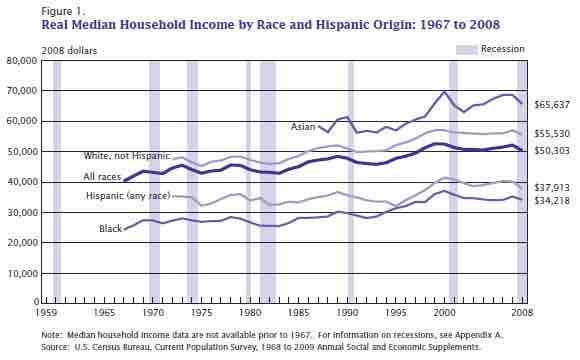Legal Definition of Race
Many governments provide legal definitions of race for purposes of census-taking and calculating budgets for governmental programs such as those that promote equal opportunity employment. For instance, in the U.S. Federal Office of Management and Budget (OMB) and the U.S. Census Bureau currently uses race and ethnicity as self-identification data items. In this system, the residents choose the race or races with which they most closely identify and indicate what their ethnic origin is (e.g., Latino).
The racial categories represent a social-political construct for the race or races that respondents consider themselves to be. OMB defines the concept of race as outlined for the U.S. census as not "scientific or anthropological" and takes into account "social and cultural characteristics as well as ancestry", using "appropriate scientific methodologies" that are not "primarily biological or genetic in reference. " The race categories include both racial and national-origin groups .

Governmental Use of Racial Categories
This image illustrates U.S. real median household income per year by race and ethnicity from 1967 to 2008, as compiled by the U.S. Census Bureau.
Race and Law Enforcement
In an attempt to provide general descriptions that may facilitate the job of law enforcement officers seeking to apprehend suspects, the FBI employs the term "race" to summarize the general appearance (skin color, hair texture, eye shape, and other such easily noticed characteristics) of individuals whom they are attempting to apprehend. From the perspective of law enforcement officers, it is generally more important to arrive at a description that will readily suggest the general appearance of an individual than to make a scientifically valid categorization by DNA or other such means. Thus, in addition to assigning a wanted individual to a racial category, such a description will include: height, weight, eye color, scars, and other distinguishing characteristics.
British Police use a classification based on the ethnic background of British society, for example W1 (White-British), M1 (White and black Caribbean), and A1 (Asian-Indian). Some of the characteristics that constitute these groupings are biological and some are learned (cultural or linguistic) traits that are easy to notice.
In many countries, such as France, the state is legally banned from maintaining data based on race, so the police issue wanted notices to the public that include labels like "dark skin complexion. "
Racial Profiling
Racial profiling refers to the use of an individual's race or ethnicity by law enforcement personnel as a key factor in deciding whether to engage in enforcement (e.g. make a traffic stop or arrest). The practice is controversial and is illegal in some nations.
In the United States, the practice of racial profiling has been ruled to be both unconstitutional and a violation of civil rights. There is active debate regarding the cause of a marked correlation between the recorded crimes, punishments meted out, and the country's populations. Many consider de facto racial profiling an example of institutional racism in law enforcement. The history of misuse of racial categories to impact adversely one or more groups and to offer protection and advantage to another has a clear impact on the larger debate. This debate is concerned with the legitimacy of the government using known phenotypical or genotypical characteristics tied to the presumed race of both victims and perpetrators.